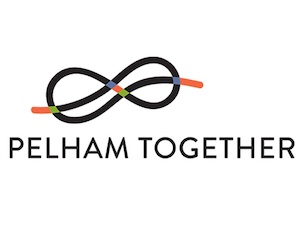Opioids
About
In recent years, opioids have become an epidemic in the United States. Opioids are medications that relieve pain and can include prescription drugs such as hydrocodone (e.g., Vicodin), oxycodone (e.g., OxyContin, Percocet), morphine (e.g., Kadian, Avinza), codeine, fentanyl, and related drugs. Heroin is also a type of (illegal) opioid. Though all prescribed opioids are intended to manage pain, synthetic opioids (fentanyl and others) are 50 - 100 times more potent than morphine and generally prescribed to treat the most extreme pain, like advanced cancer pain. Illegally produced and distributed synthetic opioids are on the rise.
Facts
In 2017, drug overdose deaths were the leading cause of injury death in the U.S and the leading cause of death for those under 50. source 2018 saw a 4.6% decline in overdose deaths, 2/3 of which were caused by synthetic opioids. source
More than 232,000 men and women died from a prescription opioid overdose between 1999 and 2018. source
23% of teens report using a prescription drug that was NOT prescribed to them, at least once in their lives. Even though prescription drugs are safe when prescribed by a doctor, they may not be safe at all for someone else. Individual medical histories, interactions with other drugs and supplements, and improper dosages can cause severe reactions. source
In the 2018 National Survey on Drug Use and Health (NSDUH), 51.3% of people who misused prescription painkillers got them from a friend or relative (mostly free, some were purchased and some were stolen), and 37.6% got through medical professionals, largely prescribed and some stolen. source
Nearly 50% of young people who inject heroin start by abusing prescription drugs and 4 out of 5 heroin users overall began using prescription drugs recreationally. Additionally, 2/3 of teens who abuse prescription pain relievers say that they got them from family or friends. source
New York State opioid overdose deaths in 2017 numbered 3,224 - a 200% increase as compared to 2010. source
Hotlines
YouthLine is a free, confidential teen-to-teen crisis and help line. Contact us with anything that may be bothering you. No problem is too big or too small for the YouthLine!
Teen Line is a confidential hotline for teenagers which operates every evening from 6:00pm to 10:00pm PST.
Get One-on-One Help to Address Your Child’s Substance Use. Support available in Spanish and English.
Free, 24/7 support for those in crisis. Text 741741 from anywhere in the US to text with a trained Crisis Counselor.
Service Providers
Outpatient chemical dependency treatment and education services for adults, adolescents, and their families.
12 step fellowship for the family and friends of individuals with drug, alcohol or related behavioral issues.
Full-time social worker at PMHS available to counsel students about social and emotional issues and substance use.
Articles
In the last year there has been an increase in copycat edibles - meaning, candy that looks almost exactly like a popular branded candy or snack, except that it also contains THC (the substance in marijuana that produces the high).
One of my childhood friends just lost his 22-year-old son to an accidental fentanyl overdose – accidental because when he took the pill, he had no idea it contained fentanyl. At the funeral, another friend said this was the sixth similar fentanyl death among families they know.
Organizations
The go-to organization for families addressing every aspect of substance use and addiction, from prevention to recovery.
Books
Other Resources
Click through to see a 3-page flyer about fentanyl overdoses. A very small amount can be deadly - these are important facts to share with your teens.
Provides information on common mental health disorders in adolescence, tips on identifying substance misuse, and steps to making informed decisions about evaluation and treatment for co-occurring disorders.
A primer on how to tackle substance abuse when you’re also dealing with depression, anxiety, or another mental health problem.














